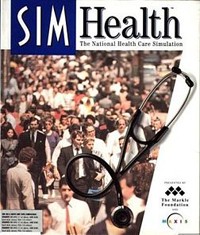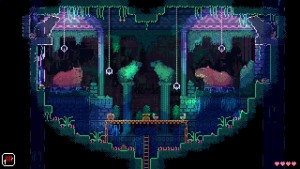Please support Game Informer. Print magazine subscriptions are less than $2 per issue
A Timeline Of The Sim Franchise

The prefix “sim” began with SimCity in 1989. It’s short for “simulation” and it qualifies a game where you simulate the act, typically one of management, of overseeing a large organic structure – or something. Placing those three letters before the title of a game is a vague identifier of what’s in store. It’s similar to placing a lowercase “i” before anything technology related. It calls up a recognizable comparison, without creating an easily definable identifier. Technically, all video games are simulations, and worthy of the “sim” prefix, but there are only certain ones that earn it. Sadly they have all but disappeared over the last few years.
A new SimCity is coming though, to possibly usher us into a second era where having “sim” at the front of your title meant it was something you wanted to play. And also that Maxis made it.
Here’s a full timeline of all the games with “sim” in the title, although with so many in existence, I wouldn’t be surprised if I missed your favorite one.
SimCity (1989) – The original game that opened the floodgates. It was almost called Micropolis, which still has a pretty good prefix with “micro,” but I think the name change was the right choice.
SimEarth (1990) – With SimEarth, you weren’t developing cities. Instead you were managing an ecosystem by manipulating things like atmospheric temperature, and trying to evolve sentient life. You can see how this was an early testing ground for what eventually became Spore. SimAnt (1991) – In SimAnt you manage an ant colony and try to defeat the evil red ants. The ultimate goal was to drive the humans out of the house attached to the garden where you made your home.
SimAnt (1991) – In SimAnt you manage an ant colony and try to defeat the evil red ants. The ultimate goal was to drive the humans out of the house attached to the garden where you made your home.
SimLife (1992) – With SimLife you could experiment with genetics to create weird animals like rhinocerigers (a half-rhinoceros, half-tiger). The hope was that you could sustain an environment where the rhinoceriger could live a full and happy life.
SimCity 2000 (1993) – SimCity 2000, which released in 1993, changed the viewpoint slightly, added elevation, and let you play around underground, among many other additions to the ’89 hit.
SimFarm (1993) – In SimFarm, you manage a farm.
SimRefinery (1993) – SimRefinery was not available to the public. It was commissioned by Chevron for its employees. The game simulates Chevron’s refinery operations so that those involved in the company could get a better grasp on how everything worked.
SimTower (1994) – It was called simply The Tower in Japan. The Japanese name sounds like the name of a survival horror game, but the game is all about making tenants and employees of a giant mega-tower happy. It’s a sort of pre-cursor for the recent mobile hit, Tiny Tower. SimHealth: The National Healthcare Simulation (1994) – The title screams excitement, especially all the words that take place after the colon. SimHealth is a realistic simulation of the U.S. Healthcare system as it was back in ’94. The game was complicated, difficult, and humorless. Things have changed a lot in 18 years.
SimHealth: The National Healthcare Simulation (1994) – The title screams excitement, especially all the words that take place after the colon. SimHealth is a realistic simulation of the U.S. Healthcare system as it was back in ’94. The game was complicated, difficult, and humorless. Things have changed a lot in 18 years.
SimIsle (1995) – SimIsle has the player developing a city on a tropical island. Tasks like creating assorted buildings and similar construction projects were carried out by agents, and did not occur instantaneously, which was a little bit different than previous “sim” games.
SimTown (1995) – SimTown was a simpler version of SimCity that was built with a younger audience in mind. Instead of building complicated cities, you create and manage small towns.
SimCopter (1996) – SimCoptor put players in the role of some kind of police officer helicopter pilot who would do things like direct traffic, contain riots, and capture criminals. You could import your city from SimCity 2000 and explore it in a 3D environment with your helicopter.
SimPark (1996) – In SimPark the player isn’t building structures and destroying nature. Instead they are attempting to manage a park and maintain a natural balance.
SimGolf (1996) – There were two SimGolf games, both similar in nature. You run a golf course, and you also play golf.

SimTunes (1996) – Another Sims title created with children in mind, SimTunes was a bit like Mario Paint. It was a musical software toy. The game was developed by a man named Toshio Iwai, who later went on to create Electroplankton on the DS. SimSafari (1998) – SimSafari was more or less the same as SimPark, but instead of managing a North American park, you manage a park in Africa.
SimSafari (1998) – SimSafari was more or less the same as SimPark, but instead of managing a North American park, you manage a park in Africa.
SimCity 3000 (1999) – The true sequel to SimCity 2000, 3000 (which wasn’t released in the year 3000), upgraded the graphics significantly and added awesome stuff like waste management!
SimTheme Park (Theme Park World in Europe) (1999) – Technically, this is a sequel to Theme Park, and isn’t in the “sim” series, but it is a simulation game. Also, Electronic Arts had the rights to use the “sim” prefix as owners of Maxis, so it decided to take advantage of it.
The Sims (2000) – In The Sims, you simulate life. The crazy thing about it, is you can simulate life while you’re living life. It’s super meta.
SimCoaster (Theme Park Inc. in Europe) (2001) – Similar to the story of SimTheme Park, SimCoaster is a Theme Park game, but it was awarded the “sim” prefix because of its relationship to Electronic Arts and Maxis. It really is all about who you know.
Sid Meier's SimGolf (2002) – Not content with just one occurrence of the letters “s” and “i” next to each other in a SimGolf title, Sid Meier was added to the beginning of this game’s title. Once again you were golfing on a golf course that you were managing. SimCity 4 (2003) – The last true SimCity sequel. There have been spinoffs and sequels since the game’s release eight years ago, but this was the last core entry into the franchise.
SimCity 4 (2003) – The last true SimCity sequel. There have been spinoffs and sequels since the game’s release eight years ago, but this was the last core entry into the franchise.
The Sims 2 (2004) – It’s everything you know about The Sims with a 3D engine and a plethora of additional options not seen in the original.
SimCity Societies (2007) – This shares many of the same gameplay elements of SimCity, but with an added focus on the social aspects of running a city full of people.
The Sims 3 (2009) – The Sims 3 gives players greater flexibility when it comes to exploring outside of your home, but it didn’t stray too far from the addictive formula of watching a person live their life. It’s like virtual reality TV.
SimAnimals (2009) – SimAnimals released for the Wii and the Nintendo DS and offered a simplified experience compared to PC “sim” titles. Players interacted with animals and plants, and generally enjoyed nature from the safety of the indoors.
And there you have it, all the "sim" games, excluding the extraneous expansions and Streets of SimCity, which probably doesn't count. Share your fondest memories of running simulations below, and sit tight for the new SimCity, because we probably won't be playing it until 2013.










